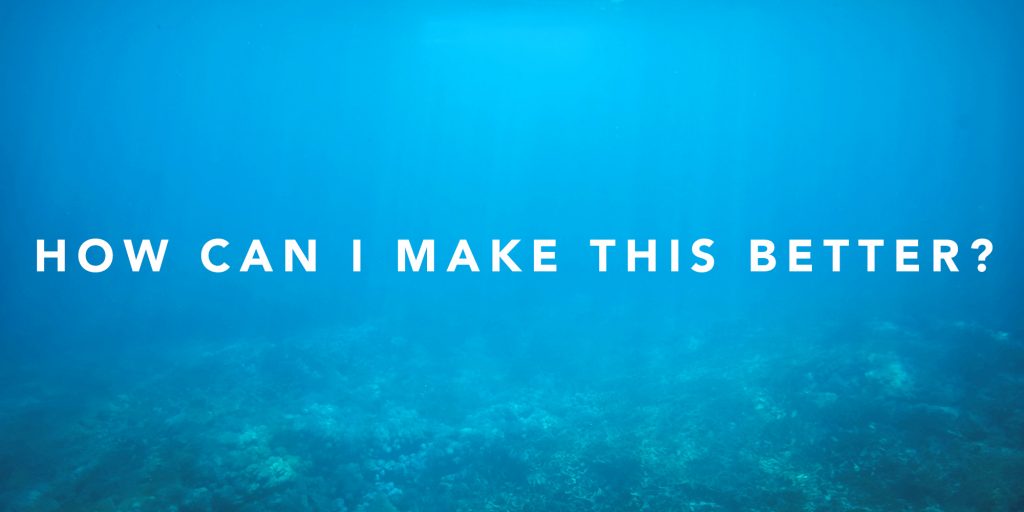I’m giving away all my knowledge in the title of this post. In those five words you have the basis of every design experience. So if you are a TLDR type, look no further than the title. However if you can hang around, I’ll try to put a bit more flesh on these bones.
My experience of design originates in graphic design, but my viewpoint changed when I took a job at a top ten agency. The team had a variety of skills, but we all came together to create the perfect solution for a client. It taught me that there was more to ‘design’ than graphic design, which was my blinkered view until that point.

In that job I also learned to see design as a process of creation and destruction. We would often sit around a table with a brief and fire out ideas. Each idea was a creation, but usually there was refinement needed, especially with early ideas, which are often like test shots far wide of the bullseye.
Those early ideas are subjected to the rigours of questioning and are usually picked to pieces and destroyed.
Then you get to the sweet spot where ideas are coming thick and fast. And due to the data that has been extracted from those early ideas, the team are more likely to propose a new idea that considers most of the previous failure points.
Finally you end up with that one idea that is really right in logic terms and in your gut. At this point you switch from, creation/destruction mode to ‘How can I make this better?’ mode.
I have an analogy that I use when talking about the magical process of idea generation in a team of talented and smart people. It goes like this: the early ideas are like a block of stone, which a sculptor sizes up. Then the sculptor starts taking off huge chunks; this is the rigours of questioning. Each question or problem shatters another part of the rock, defining the rough shape. When he has the overall shape, the sculptor moves in with his fine chisels to add detail. Finally, we reach the ‘How can I make this better?’ stage. The sculptor is happy with the sculpted piece, and he starts to polish.
A concept or proposal can always be better, can always be more polished.
How can I make this better?
Was the question PayPal asked when they created their online payments.
How can I make this better?
Was the question Richard Branson asked about rail travel and air travel.
How can I make this better?
Was the question Steve Jobs, always asked, about everything.

I often look at the world around me with this same mantra on my lips. I’m writing this on the train and in front of me is a paper non-slip placemat (all good). Then next to that is a drinks mat, only it isn’t made from the same material, so the glass is moving around.
How can I make this better?
Use the same material as the placemat. The benefit would be a glass that did not slide about. And there could be a cost benefit by getting a discount for two products ordered from the manufacturer of the placemat. It would probably be cheaper as the drinks mat looks like a two-piece item instead of the one-piece placemat. This is a boring example, but it shows how you can apply ‘How can I make this better?’ thinking to anything.
In my business, I employ the same thinking. ‘How can I make this better?’ is my silent mantra. Whether it is a piece of marketing, a product or even an internal process. We looked at a lot of our print and production processes with ‘How can I make this better?’ in mind. Because it also means:
‘How can I make this quicker, simpler, easier, more accurate, more cost effective, more scalable and less likely to be wrong?’
How can I make this better? Can also be a great question to ask your staff or your customers. They may have insights you are completely unaware of.
